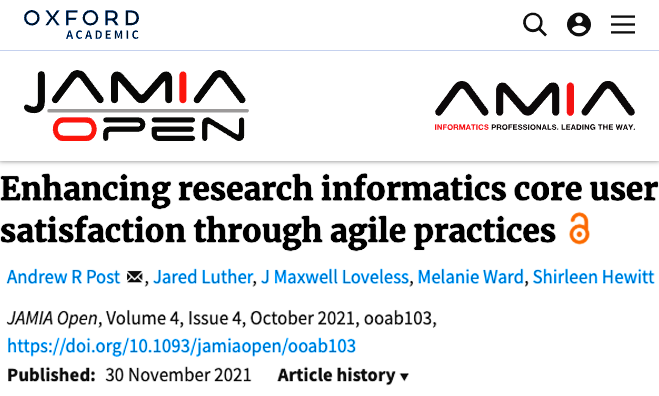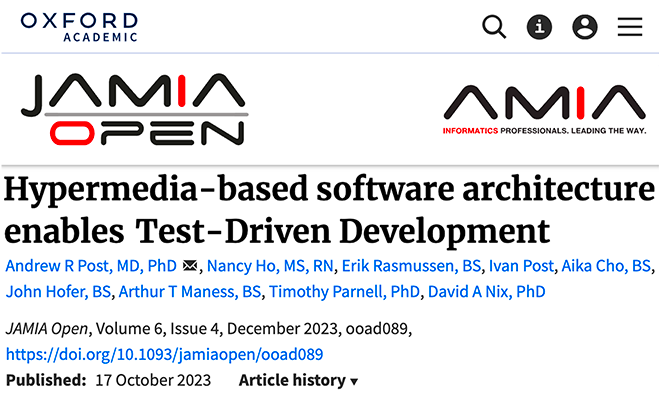- Administration Apps
-
Clinical/Research Apps
- Cancer Clinical Research (CCR)
- Clinical Trials - OnCore
- Comprehensive Oncology Research Environment (CORE)
- CORE Browser
- CORE Browser FAQs
- iQ (Integrated Query Tool)
- itBioPath (RETIRED)
- LabVantage
- Metabuilder - BST - (itBioPath)
- Metabuilder - Pathology
- Metabuilder - RSR - (Subject)
- Patient Status Review - CCR
- PayTrac
- REDCap
- Research Subject Registry (RSR)
- Genomics Apps
itBioPath (RETIRED) Requires BIAB
Launch App
itBioPath offers access to biological specimens, and information about them. It is common for research projects to start with the availability of tissue specimens from individuals meeting certain criteria.
This HCI Research Informatics Shared Resource (RISR) system addresses the need for labs to track specimens collected, processed, and stored as well as the need for researchers to access those specimens along with related clinical data. Specimens come into HCI research programs through many avenues. The primary HCI biobank is managed by HCI's Biorepository and Molecular Pathology (BMP) Core Facility, other specimens are collected and processed through HCI collaborative labs or may be purchased from a vendor.
itBioPath allows for tracking of all of these types of specimens. Additionally, products of specimen division and transformation are tracked while preserving the relationship with their originating specimen.
Key Features include:
- Mobile Applications – Includes support for allowing users to view and update data on the go, while being in the freezer storage areas or hospital surgical suites.
- UPDB Integration – Includes automated linkage of patients to UPDB persons for approved protocols, enabling research cohort identification and preparation for research projects with a familial component.
- Searching – Includes flexible searching on aliases, protocol/project, or tissue type, plus detailed searches by status, collection, and pathology attributes, and more.
- Collection and Aliquot Storage – Includes date collected, preparation type, amount, storage location, sample type, tissue type, lab collected by, and specimen aliases.
- Disbursement and Registration Tracking – Includes project disbursed to, amount disbursed, and lab to/from.
- Genomic Data Integration – GNomEx is HCI RISR's software solution that documents, organizes, and tracks microarray and massively parallel DNA sequencing experiments from ordering through analysis.
- Batch Operation Support – Users can add, register, disburse and transform specimens in bulk operations in order to make the data entry workflow more efficient and consistent.
- University of Utah Data Warehouse – Where the collection protocol allows, patients can be linked with records from the University Hospital's data warehouse. These records can be viewed alongside patient and sample details.
- CCR Integration – The Cancer Clinical Research (CCR) application is HCI RISR’s software solution for capturing clinical details in order to identify cohorts for research. itBioPath samples are auto-linked with CCR patients.
- RSR Integration – The Research Subject Registry (RSR) application is HCI RISR’s software solution for capturing study details on approved research studies. itBioPath samples are auto-linked with RSR subjects.
- Path Reports – Data for path reports can be extracted by either CCR or itBioPath users and shared across the two applications. They can also be linked with various specimens.
- Custom Reports – Where data can’t be retrieved from iQ, custom reports can be created and run live through itBioPath.
- Tracking of specimen transformations or derivations – Links "parent" and "child" specimen relationships for full traceability.
- Barcoding – Automatically generates a barcode for labeling stored specimens. Barcode printers purchased by labs can be hooked up for use with itBioPasth. Scanned barcodes can be used in searching the database for the appropriate records.




